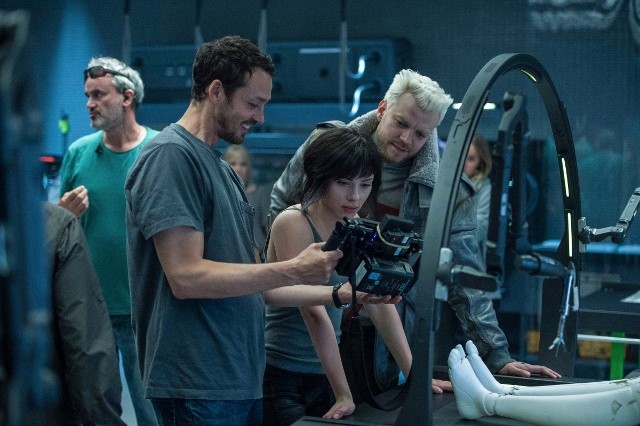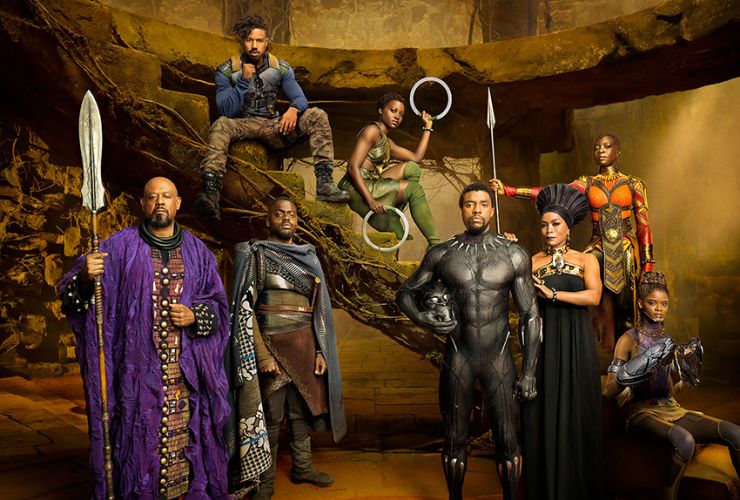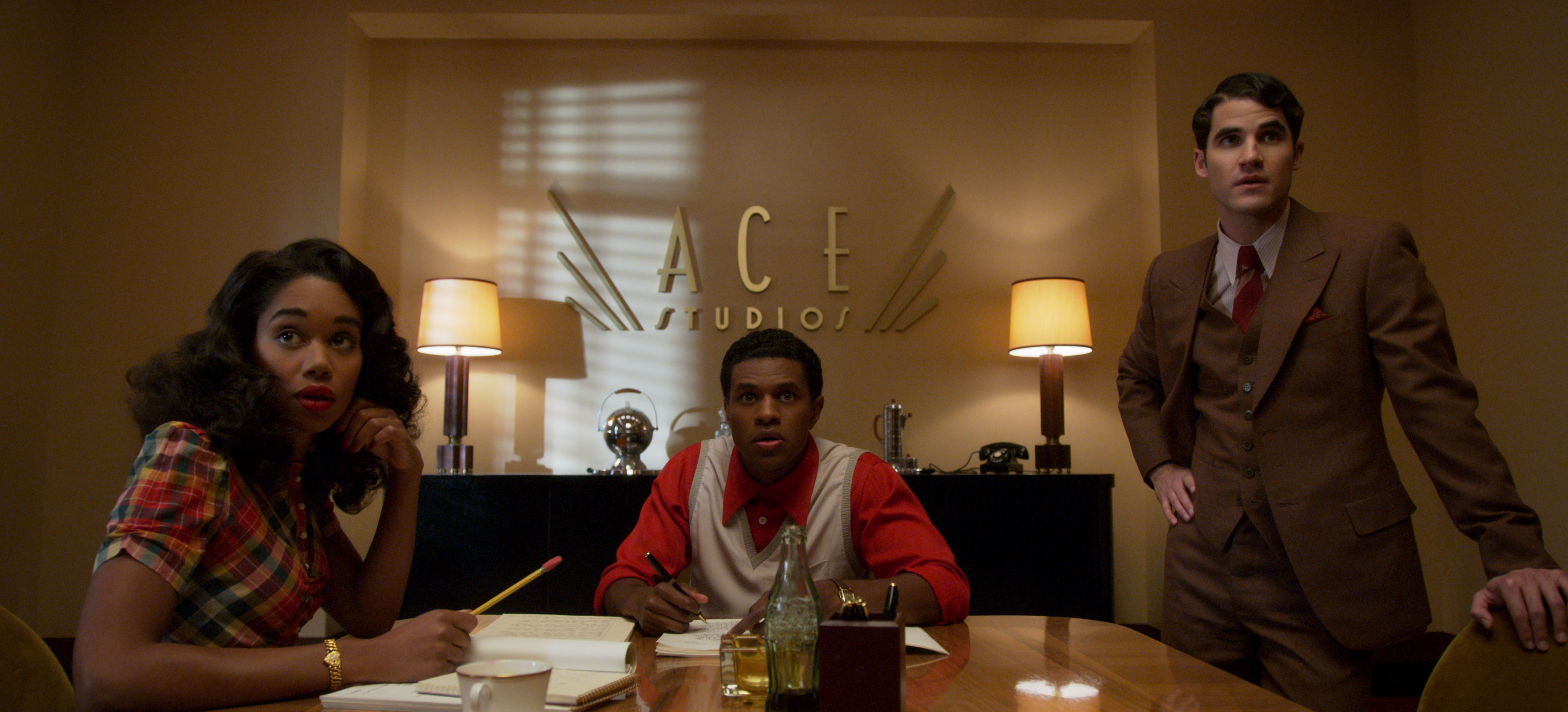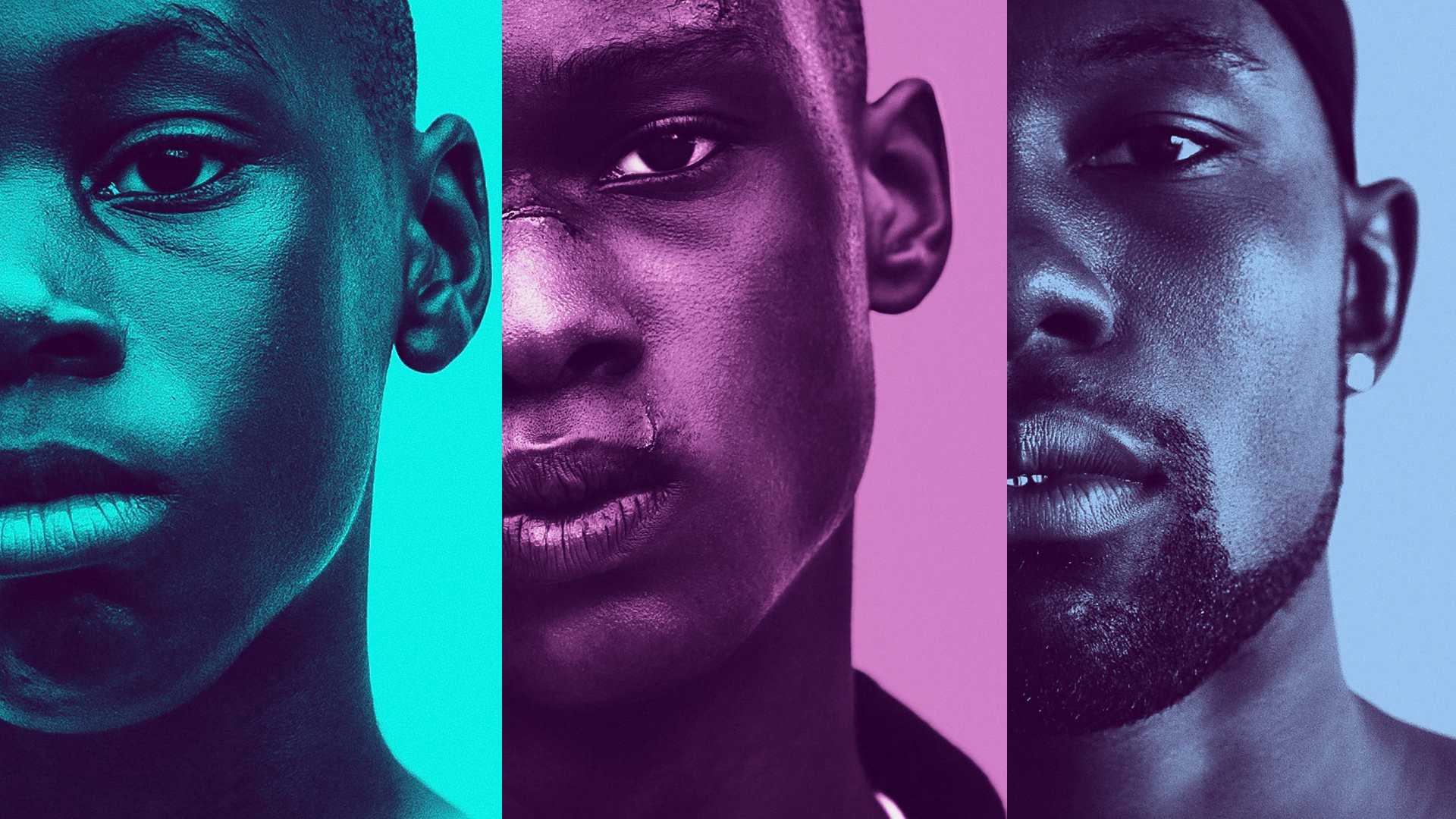Increasingly and always there has been a conversation in the media about representation and black and brown people. What is representation, what is the representation we deserve, and who says? There have of course been great strides in roles for black and brown people, the types of roles have shifted, the perceived ability to reach goals in entertainment have widened. There are ways to advance the scope further and ways that it seemingly has narrowed. How come it seems like with every stride it feels like we take steps backwards at the same time. This is a combination of history, misdirection, and as always politics.
The barrier to entry for a show — from a network’s point of view — is, can the audience identify with this person, and is race going to be a roadblock? – Sam Esmail
VIEW FROM THE OUTSIDE
Why is it everytime they create a new “black” TV show… the whole cast is the lightest shade of black they can find ?
— Nyla (@tinashoww) December 21, 2019
There is the constant conversation on colorism and the inequality in the industry from passing to the exotification of dark skin women. Recently this conversation has been revisited with the arrival of the show #blackAF. The idea that all of the actors within Kenya Barris’s shows and current black media at large can be compared to all the shades of a brown paper bag. This of course is alluding to the infamous brown paper bag test that inhibited black and brown people from entering many spaces or getting services based on how far in tone their skin was from a brown paper bag. So, it is no surprise that the world is yearning for more shades of black and brown in situations that reflect a world we want to see.
In the Kenya Barris’s world, he himself constantly straddles the color spectrum that emulates his own experience, living in and operating around mixedness and the performativity of blackness due to the pressures of an ingrained “brown paper bag” history. It is possible that mixed families can be of all shades. Kenya’s shows could be the one to talk about ancestry and how recessive genes and genetic traits can come out in many ways, but this is not the show Kenya sets out to make.

Critics and the interwebs having no chill is a part of the fabric of media. We are meant to prod and pry to get the media makers to think again. But when the idea is to be seen well… at all really, how do we navigate the in between spaces? Living in a Blerd world it is the goal to be imagined. We engage in worlds beyond what is physically possible, so we deserve to believe all shades of brown exist in this space. This is the impetus of Afro-futurism. It is almost like Hollywood does not know what to do with the black and brown rainbow. Light skinned and racially ambiguous is desirable, our Zendayas (no shade on her that girl is TALENTED and fierce) for casting directors this is an “easy win.” This has been built in through history. Dark skinned means something when casted in certain places for women especially, and the medium tones, well in the industry can be “interchangeable.” Before we get into a fight – the article is called the color cinnamon. So, let’s take a closer look.
THE VIEW FROM THE INSIDE

As a Black actor myself, I have to consider my skin tone, my affect and appearance before my talent and capabilities for a role. Or maybe that is just a culture of oppression blocking my entry from the inside out. I remember speaking to a close friend about this same issue. She talked about the boxes she fits within, that she is “skinny” “light-skinned” or “mixed” which offered her certain access to more roles. She was over the fact that the industry has allowances to be racist and decided a different path for herself.
Now, my family comes in many shapes and sizes as all black families do. I, being the middle child, was given 50/50 of my family’s shades. A toasty brown, maybe even a dark caramel (let’s leave paper bags out of it from here on out). When I moved to New York, my skin color became apparent to me in the form of food and spices, being called cinnamon while cat-called down the street. I never thought of myself as light-skinned. I’m brown, and I guess I wasn’t aware of the spectrum that would deem someone “light-skinned.” While working at the wax museum one fine day (no it was terrible), my co-worker starts chatting with me about this girl who was hired to sing carols in the lobby. She seems to be all flirty with him but then was all standoffish. My coworker made a comment that, that’s how light-skinned girls are – then says “no offense” to me. For a MILLION reasons why – I had pause. He said that like I was light-skinned, and like I was going to take offense for also being light-skinned, not for the statement in general. I went on an existential journey in that moment. I felt like Dr. Manhattan looking at a picture through time experiencing my life at all moments. How does the world see me? What are the connotations with “light-skinned,” and WTH.
My family would start to call me light-skinned in my adult life confusing the ISH out of me even more, because it’s all jokes and fun but it was never a term of endearment. Apparently, I was fighting a different fight…

I started to notice a pattern in roles that I would get called in for. I speak for myself of course, I cannot and will not speak for an entire race or “shade” of people. My “medium tone” for lack of a better phrase as an actor (for industry analysis purposes) can be swing cast. I would constantly find myself getting brought in to audition for roles that could be played by any “race” really. The best friends, the not totally sassy, but eccentric characters. Also a lot of nurses?…but it let me know what my color meant in the industry. It’s a diversity hire that would work, no problems, no mess, no noise. The character could be white or black, but if they want diversity points, they could go with me. These also work in known black shows. Why isn’t Nola Darling more of a Viola Davis shade or a Tessa Thompson hue? What would that mean? Would it say something else? This is of no critique of the talents of these actors, this is all to shed some light on the formation of the industry as a cog and what ridiculous constructs it has erected for us.
Women of color have to work harder to stand out for a role that is meant to blend in. Blending is a tough situation when the terrain is mostly…white. But getting a part can mean the rise of your career and the access that breeds access for others to make the scenery a bit more blended. How do actors like me make a mark, get seen, and change the idea that we are interchangeable? What is the decision process for all of this!!?
VIEW FROM THE TOP

There is the internet, the critics, the watchers and consumers, we say what’s what, maybe cancel you, or at least make you feel bad for not thinking. There’s the personal journey, entering the media with the desire to stretch the industry “reality.” Then, there is the politics of the politics of entertainment and media. The gatekeepers who keep us confused because, honestly, they don’t know. Now, this isn’t all upper management, obviously there are people up there making some damn good calls. Then, there are the ones hiring Zoe Saldana to play Nina Simone…we won’t go into that. We find ourselves asking why and how and why not when it comes to the type of diversity that happens on the big and small screens.
The lack of range in black and brown hue on screens has taken on new faces these days with the outcome an Ouroboros. In the name of proper representation, we cast a white person. We’ve seen it in Doctor Strange where director Scott Derrickson tried to explain the reasoning around white washing. Making The Ancient One Asian would perpetuate the stereotype of “Dragon Lady.”
These are the conversations we see over and over again. Ghost in a Shell is a robot – not even human…side eye. The conversation keeps happening because Hollywood doesn’t do a fully introspective shift. The ideals in the world don’t change, so the decision makers “green-light” topical updates. What isn’t exercised is the fact that the decision makers create the circumstances that change the ideals!
I remember in grad school talking to a friend of mine who has been in the film industry basically her entire life. She spoke about the issues in being the only person of color in the room most of the time. Working on a student project (this was probably about 15 years ago now), they were producing a film about a boss who cheats on his wife with his secretary (I know… real inventive). The possible casting was a list of white actors. My friend looking to be that voice that needs to be heard offers the idea of casting differently, maybe bring in a character of color – possibly a Black person. Going off the idea back then that there can only be one…if the husband is Black, it’s the cheating Black man. If the wife is Black, she’s the Black woman getting cheated on by a white man with his white secretary. So the secretary is Black?… The white boss is cheating on his wife with a Black woman secretary?? I don’t think anyone wants any of these scenarios. Truth of the matter is, we need better writing, better stories where people of color are not interchangeable for white characters. Stories that can be fantastically satisfying, and I feel ownership of it, not feeling like the “political” choice or the “safe” choice.
VIEW FROM THE FUTURE

An internal and interconnected shift needs to happen with a level of awareness that comes with growing pains.
The new Netflix series Hollywood aims to give us a desirable view of what change could have been in the Hollywood industry during the rise of talking pictures in the American World War II era. I know – a view from the future as portrayed by the past.
The show follows the many facets of pursuing that dream of making it in Hollywood and the interconnectedness of studio, producer and actor. The show is helmed by Ryan Murphy, so it has a musical rhythm to it; the time period aids with that musicality all down to the – ya see! And Listen here! But through this period in time Murphy highlights the industry machine and the ability for change – which inspires you and sheds light on the animosity you sometimes feel as a creator in this game. You love-hate it, because it’s a fantastical realness that helps you understand not much has changed and changing it IS that easy – but it also… isn’t.
There was a moment in the show that perfectly illustrated the dichotomy of the industry.
***This is spoilers for the show Hollywood, stop now if you haven’t watched it.***

L to R: Laura Harrier, Jeremy Pope and Darren Criss
credit: NETFLIX
The (fictitious) producers come together to talk about the crucial ending to the film they are creating in the show called Meg (once called Peg based off of the actress Peg Entwistle who jumped off of the Hollywood sign in 1932). A woman who has risked it all for “the dream.” The character in the film (inside the show) meant to be a metaphor for every person chasing a career in pictures who encounters the reality of failure. Peg historically jumps off of the Hollywood sign to their untimely death. But the character is no longer white in this iteration, the (fictitious) producers and writers have broken barriers and casted a – yup a toasty brown actor (which for the World War II era the show is set in, I guess would have been seen as dark skinned??) They go on to say, “what does it say that the young black girl ran to Hollywood to pursue her dreams, can’t hack it, and just jumps off the Hollywood sign.” This is not an image the picture is setting out to say, the characters conclude. The issue is…they are not wrong. In order for them to break a barrier, they had to rewrite history. Once you decide the “color” of someone in a film or tv show the narrative changes, and we have to change with it.
It is a delicate space to be. We as consumers and critics have a right to call out, but until something happens on the inside at the top, the call out keeps breeding defense and infighting. Kenya Barris, to appease someone, will probably write like a million Shaft movies and cast all the shades of the black brown and we’ll be pissed like…not like this…not like this. At the same time, just avoiding the stereotypes and making excuses does not make it go away, it does not challenge the mechanism, it just reiterates the flaws.
Everything needs to work in tandem.

The reason Black Panther broke beyond the comic book and nerd community is because it did exactly that. They brought together a multitude of voices to make a layered nuanced cinematic experience. This does not mean the productions cannot fail, it just means everyone in the room needs to understand the machine is made up, but they as creators are real and the effect of what they do is real. The writing has to be dynamic no matter the story – simple or complex. The casting directors have to be a plethora of shades and experiences. The producers, directors, and all need to see that colors do mean something. And having a multitude of shades can explode the narrative to finally move beyond the confinements the industry has put itself in.
This is why Moonlight deserves and owns best picture. It is a story that goes beyond what an industry could believe makes a “good film.” It displays black and brown people in ways that “traditionally” wouldn’t be “relatable” to the masses, and shades of black and brown all together in ways that aren’t making some political statement intentionally but is telling an authentic story. Bringing together an amalgamation of people, writers, directors, cinematographers – frickin lighting! All who believe in letting the nuance breathe, proving this film lives, we live. That movies and television can show relatability in layers and make truth telling an experience.
Want to get Black Nerd Problems updates sent directly to you? Sign up here!
Follow us on Twitter, Facebook and Instagram!



Show Comments